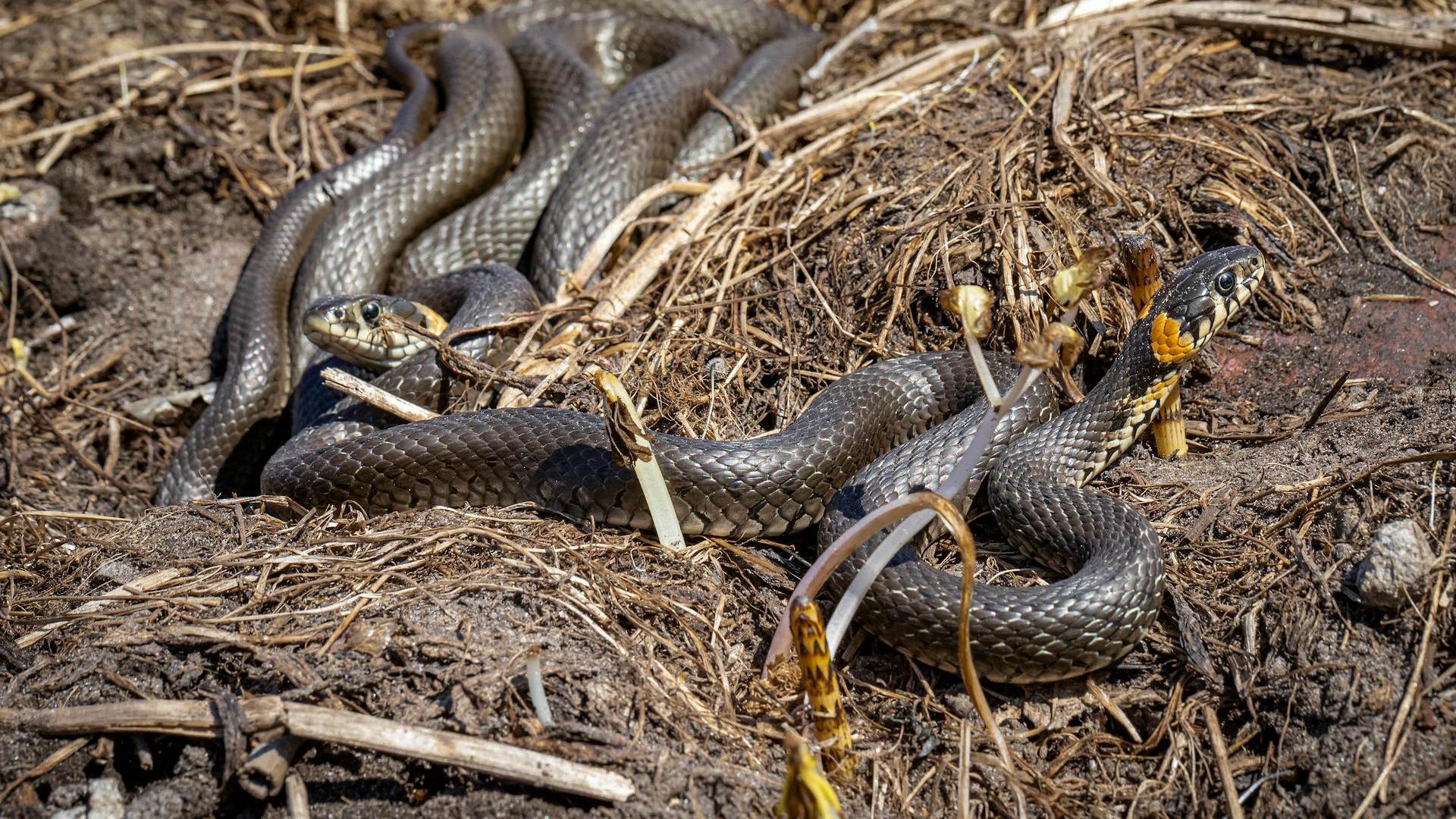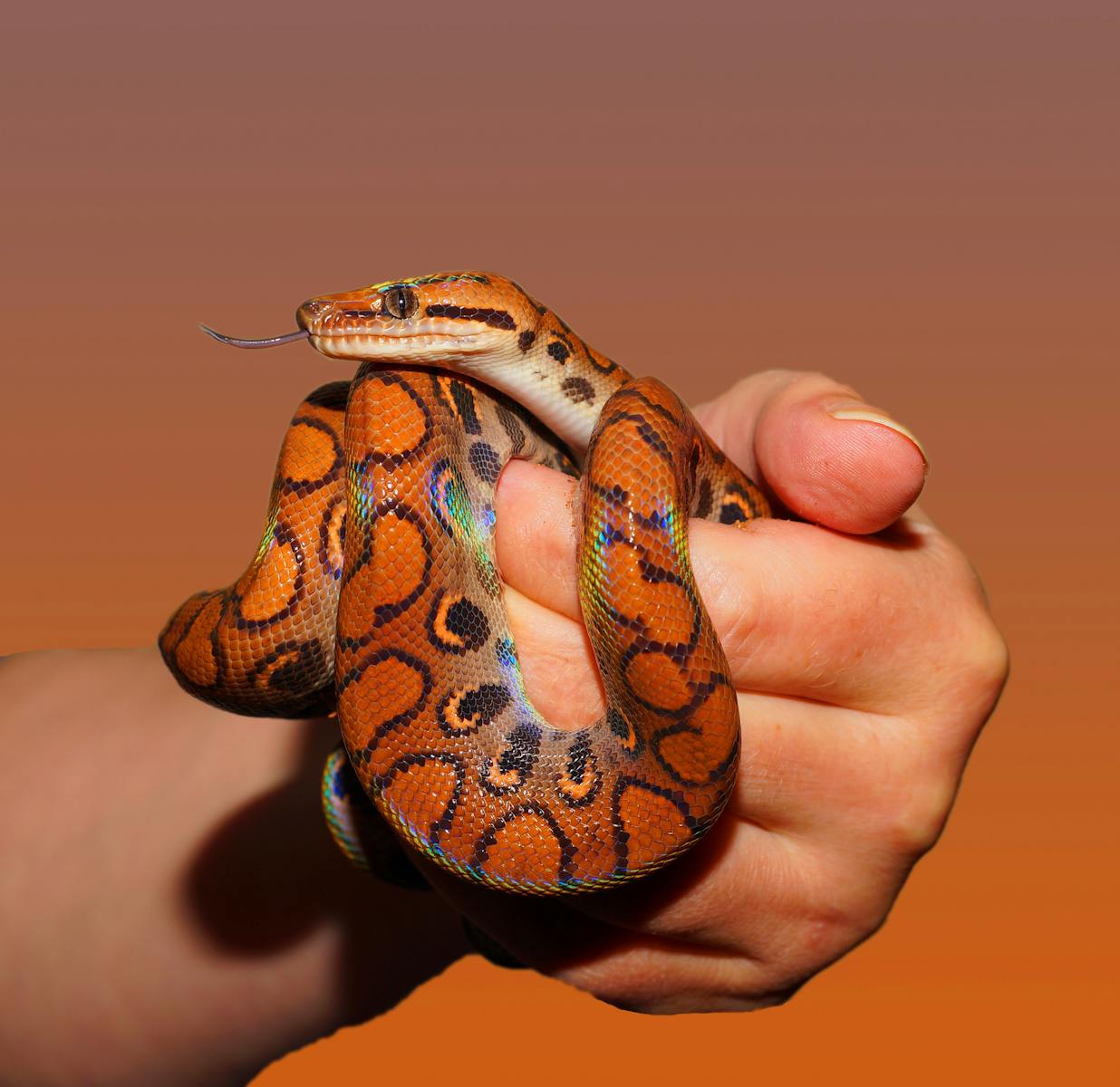The relationship between humans and reptiles has always fascinated animal behaviorists and pet enthusiasts alike. While mammals like dogs and cats are known for their strong bonds with humans, reptiles—particularly snakes—have remained somewhat mysterious in their cognitive abilities and social recognition. For the millions of people keeping non-venomous snakes as pets worldwide, one question frequently arises: can these serpentine companions actually recognize their owners? This question touches on deeper aspects of reptilian cognition, sensory perception, and what we understand about the emotional and mental capabilities of these ancient creatures. Let’s slither into the fascinating world of snake cognition and owner recognition to discover what science tells us about these complex relationships.
The Reptilian Brain: Different But Not Simple
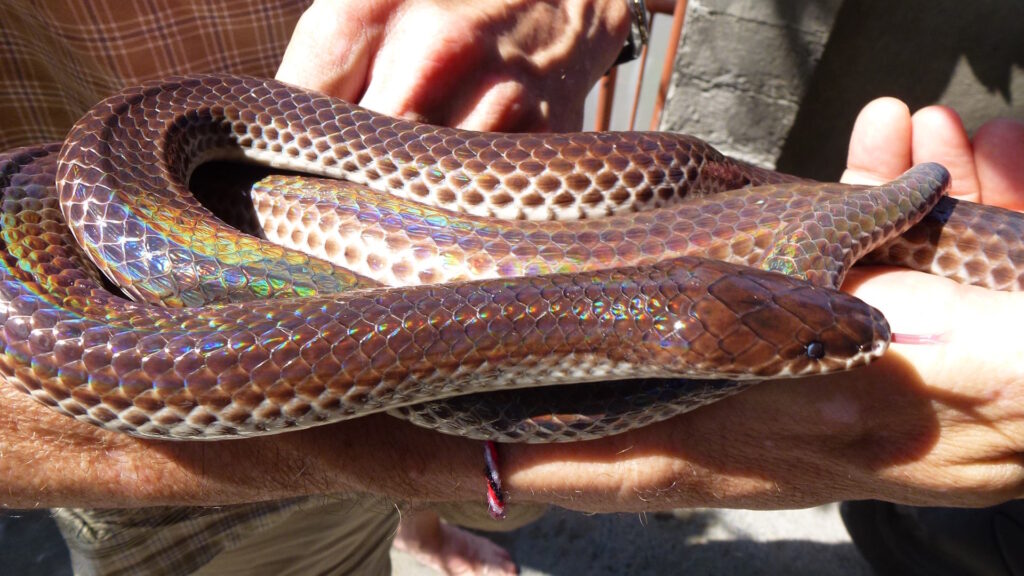
Contrary to popular belief, the reptilian brain is not merely a primitive version of mammalian brains. While snakes lack a neocortex—the part of the brain associated with higher cognitive functions in mammals—their brains are specialized in different ways. Snakes possess well-developed olfactory bulbs for processing scent information and optic tectums for visual processing. These neural structures allow them to navigate their environment with remarkable precision. Research in reptile neuroscience has challenged the old notion that snakes operate purely on instinct, revealing that they possess learning capabilities, spatial memory, and potentially some form of recognition. Their cognitive architecture may be different from mammals, but it is sophisticated in ways that suit their evolutionary needs and ecological niches.
How Snakes Perceive Their World
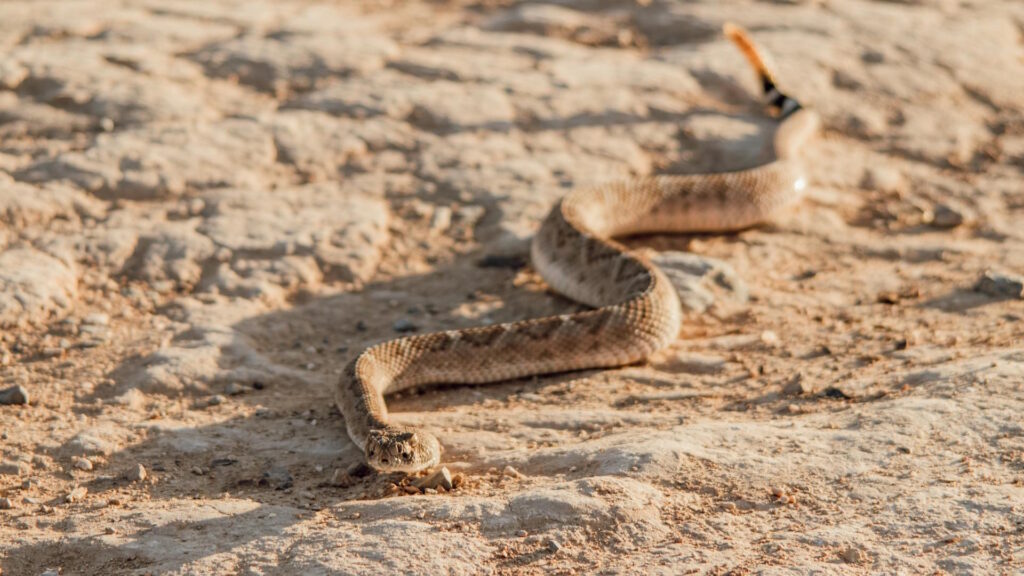
Understanding how snakes might recognize owners requires knowledge of their sensory systems. Unlike humans who primarily rely on vision, snakes experience their world through a complex integration of chemical, thermal, tactile, and visual information. Their forked tongues collect airborne particles that are analyzed by the vomeronasal organ (Jacobson’s organ) in the roof of their mouth, providing detailed chemical “images” of their surroundings. Many species also possess infrared-sensing pit organs that detect heat signatures from prey and potential threats. Vision varies significantly among species, with some having excellent eyesight while others rely more heavily on other senses. This multisensory perception means that a snake’s “recognition” of a human would likely involve processing a combination of our scent signature, body heat pattern, visual appearance, and vibrations we create when moving—a fundamentally different experience than how we recognize each other.
Evidence of Owner Recognition in Captive Snakes
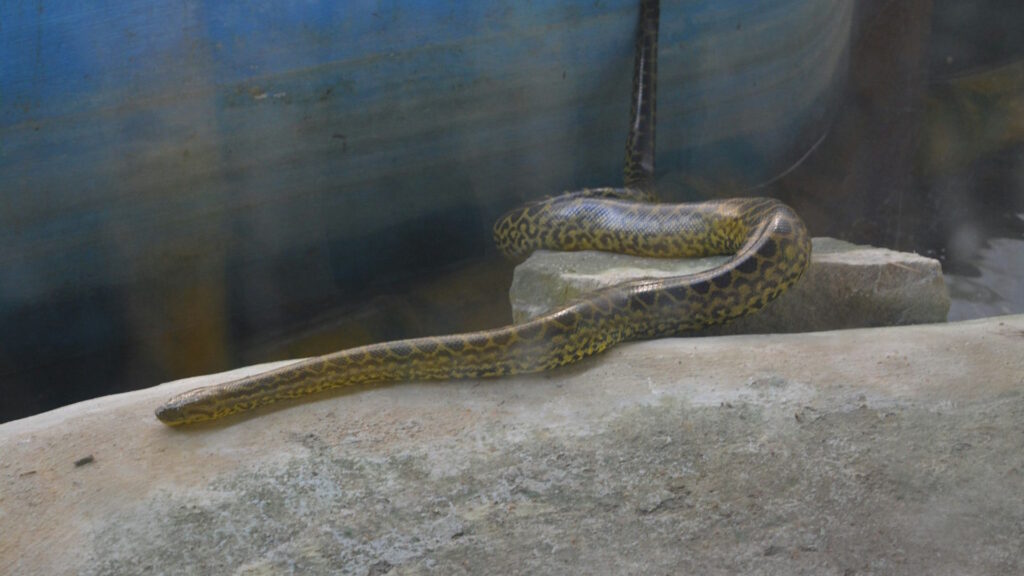
Anecdotal evidence from snake owners worldwide suggests that some snakes do appear to recognize their regular handlers. Many keepers report that their snakes behave differently with them compared to strangers, showing reduced defensive behaviors, more relaxed body language, or even appearing to seek interaction. Ball pythons, corn snakes, and boa constrictors are frequently cited as species that seem to display this recognition. Scientific studies on this specific question remain limited, but research on captive snakes has shown they can learn to associate specific humans with positive experiences like feeding or negative ones like uncomfortable handling. A study at the University of Tennessee found that corn snakes could distinguish between familiar and unfamiliar humans based primarily on scent cues. However, it’s important to note that recognition doesn’t necessarily equate to emotional attachment as mammals might experience it.
Chemical Recognition: Following the Scent
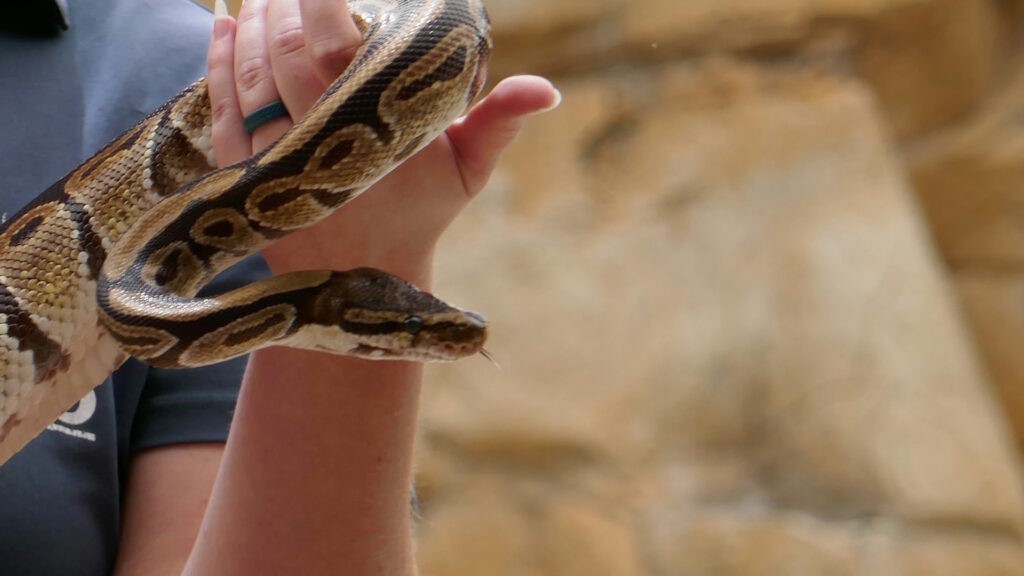
For snakes, scent recognition likely plays the most significant role in identifying familiar humans. Each person has a unique chemical signature composed of compounds from skin oils, sweat, soap residues, laundry detergents, and other environmental factors. Snakes have demonstrated remarkable abilities to distinguish between complex scent profiles. In controlled experiments, snakes have shown clear preferences for environments containing the scent of their regular handlers versus those with unfamiliar human scents. This chemical recognition is probably the strongest component of how a snake might “know” its owner. When you handle your snake regularly, it becomes accustomed to your specific scent signature, potentially creating a form of familiarity that influences how the snake responds to you compared to strangers who carry unfamiliar chemical cues.
Behavioral Conditioning Versus True Recognition
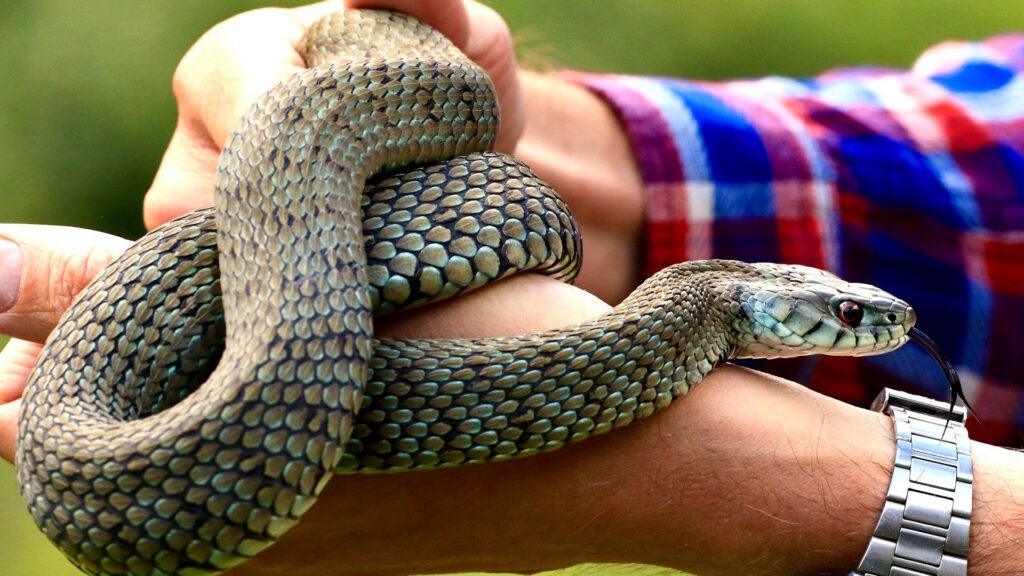
An important distinction must be made between true recognition and behavioral conditioning when discussing snake-owner relationships. Snakes are certainly capable of associative learning, forming connections between specific stimuli and outcomes. A snake may learn to associate its owner’s scent, appearance, or handling style with positive experiences like food, warmth, or gentle handling. Conversely, it might associate rougher handlers with stress or discomfort. This form of conditioning can create behavior patterns that appear like recognition but operate differently from how a dog recognizes its owner. Herpetologists debate whether snakes truly “recognize” individuals as distinct entities or simply respond differently to familiar versus unfamiliar stimuli based on past associations. The distinction is subtle but important for understanding the cognitive processes at work in the snake brain.
Species Differences in Recognition Abilities

Not all non-venomous snakes show the same capacity for recognition. Generally, species with more complex natural social behaviors or hunting strategies appear to show greater cognitive flexibility and recognition abilities. Ball pythons (Python regius) are frequently cited by owners as showing good recognition, possibly due to their generally calm temperament allowing for more regular handling. Larger constrictors like boa constrictors (Boa constrictor) and reticulated pythons (Python reticulatus) also demonstrate what appears to be recognition of regular handlers. Corn snakes (Pantherophis guttatus) have been subjects in several cognition studies showing their ability to learn and potentially recognize handlers. In contrast, more primitive species or those rarely handled may show less apparent recognition. These differences highlight the diversity of cognitive adaptations across snake species and suggest that a “one-size-fits-all” answer about snake recognition isn’t possible.
The Role of Handling Frequency and Method
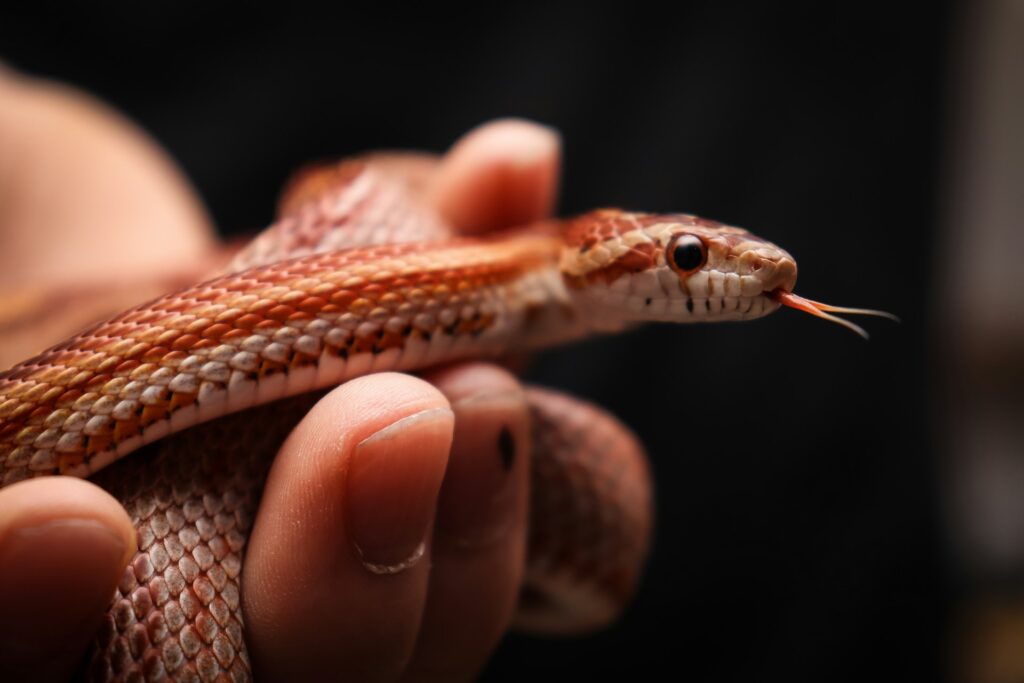
The frequency and quality of interactions between snakes and their owners play a crucial role in developing potential recognition. Snakes that are handled regularly and gently tend to become more accustomed to human interaction and may show clearer signs of recognizing their regular handlers. Consistent, positive handling sessions help create positive associations with a person’s scent, appearance, and handling technique. Conversely, infrequent or stressful handling can prevent these associations from forming or create negative associations. Herpetologists recommend regular short handling sessions, especially when snakes are young, to help them become accustomed to human interaction. The handling method matters too—supporting a snake’s body properly and moving confidently but gently helps build what could be interpreted as trust or at least familiarity between snake and keeper.
Signs That Suggest Recognition
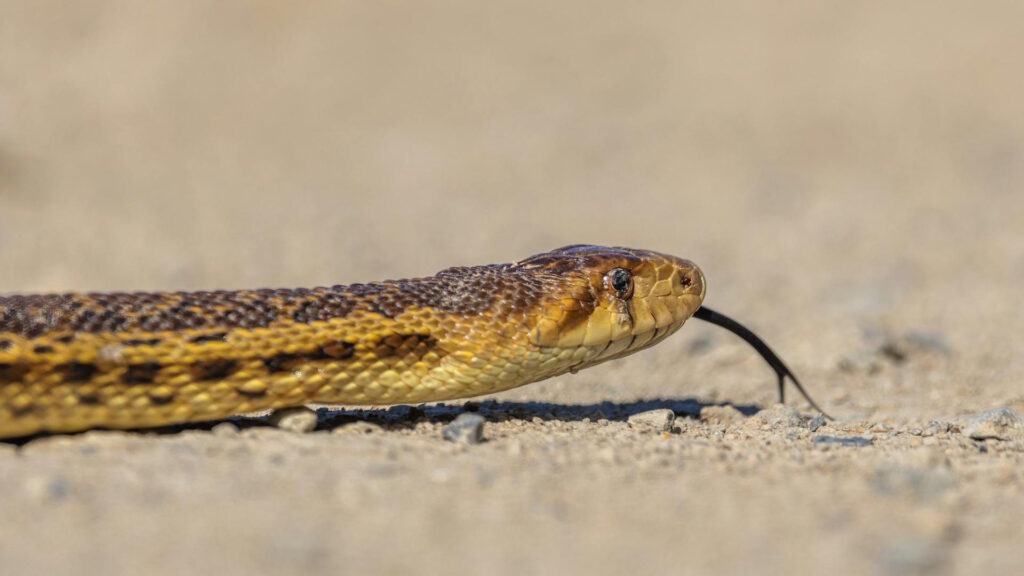
Snake owners often cite several behavioral indicators that suggest their pets recognize them. One common observation is reduced defensive behaviors—a snake that typically balls up, hisses, or strikes at strangers may remain calm when its owner reaches into the enclosure. Some snakes show increased exploratory behavior around familiar handlers, willingly moving onto their hands or arms without coaxing. Changes in tongue-flicking frequency can also indicate recognition, as snakes often increase this behavior when processing new scent information but may show reduced flicking with familiar scents. Body language such as relaxed muscles, smooth movement patterns, and willingness to remain exposed rather than seeking hiding spots can indicate comfort with a particular handler. While these behaviors don’t conclusively prove recognition in the way we understand it, they do suggest that snakes can differentiate between familiar and unfamiliar humans based on their sensory information.
Comparing Snake Recognition to Other Reptiles

When examining snake recognition abilities, it’s useful to compare them to other reptiles. Some lizard species, particularly larger ones like monitors and tegus, appear to show stronger owner recognition than most snakes. Bearded dragons have been documented showing preferences for familiar handlers and even seeking interaction with their owners. Certain tortoises recognize their caretakers and may approach them for food or attention. These differences likely relate to natural history—many lizard species have more complex social structures or territorial behaviors than most snakes, potentially requiring greater cognitive flexibility. Research suggests that reptiles with more complex ecological niches or social behaviors tend to show greater recognition abilities. This comparative approach helps contextualize snake cognition within the broader spectrum of reptilian capabilities, suggesting that while snakes do show some recognition, it may be less developed than in some of their reptilian relatives.
The Science of Habituation Versus Recognition
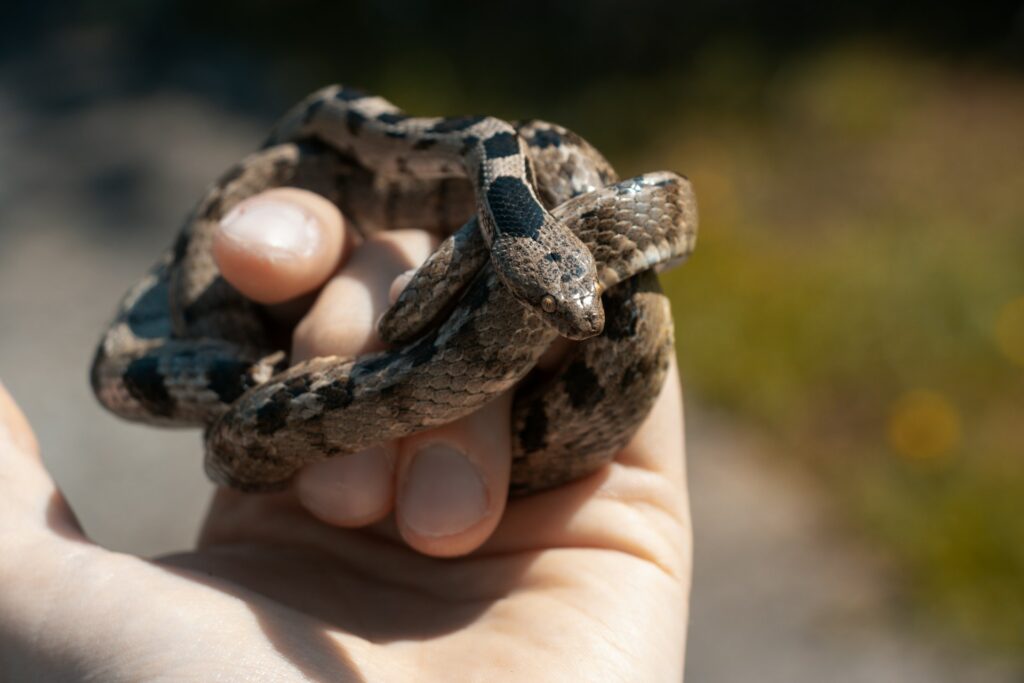
Scientists differentiate between habituation and true recognition when studying snake behavior with humans. Habituation is a simple form of learning where an animal shows decreased response to a stimulus after repeated exposure without positive or negative consequences. For example, a snake may stop reacting defensively to handling simply because it has learned that handling isn’t dangerous. True recognition, however, involves identifying a specific individual and responding differently based on past experiences with that individual. Research into this distinction has shown mixed results with snakes. In laboratory settings, some studies have found that snakes can distinguish between individual humans based on scent, suggesting something beyond mere habituation. However, these studies are limited and don’t necessarily translate to the complex emotional recognition that mammal owners might expect. Understanding this distinction helps set realistic expectations about the snake-human relationship.
Building Relationships Through Feeding Routines
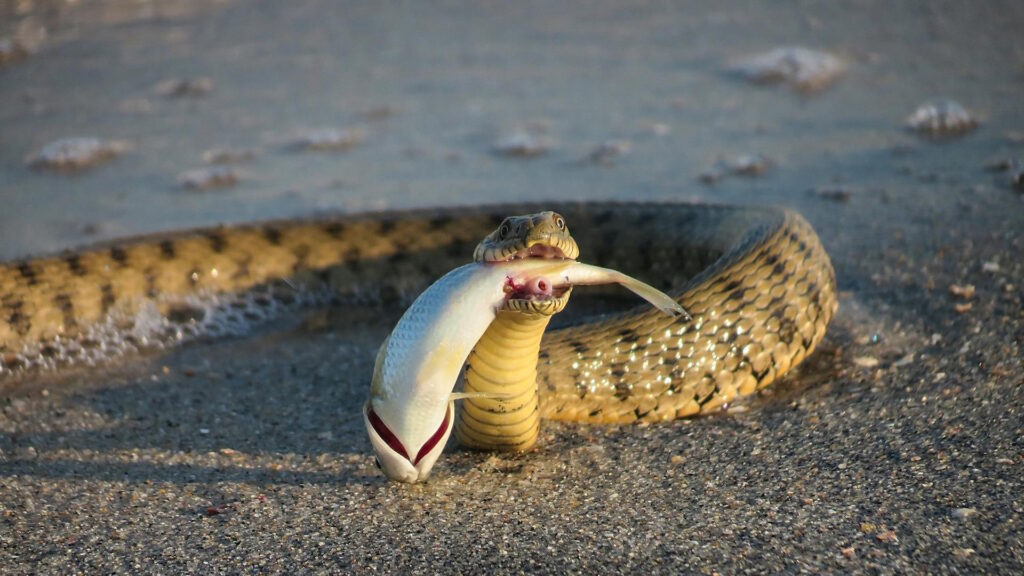
Feeding routines play a significant role in potential snake recognition of owners. Many snake keepers report stronger apparent recognition when they are the exclusive food providers for their pets. Snakes are highly motivated by food and capable of forming strong associations between specific stimuli and feeding opportunities. Some owners note that their snakes become more active when they enter the room around regular feeding times or respond differently to the person who regularly feeds them versus other household members. However, this presents a double-edged sword—snakes might associate a person’s scent with food so strongly that they exhibit feeding responses (striking or constricting) when handled. This is why many experienced keepers recommend using feeding tongs and separate feeding enclosures to prevent snakes from associating hands directly with food. These feeding-based associations represent one of the strongest forms of potential owner recognition in captive snakes.
The Emotional Component: Do Snakes “Like” Their Owners?

Perhaps the most challenging question is whether snakes experience anything resembling affection for their owners. Reptiles lack the neurological structures associated with complex emotions in mammals, and their evolutionary history has not selected for social bonding in the way that shaped dogs or primates. However, this doesn’t mean snakes experience no internal states that influence their behavior. They certainly can experience stress, comfort, security, and other basic states that affect how they interact with handlers. Some snakes appear to seek out their owners’ body heat or show preferences for resting on a familiar person. These behaviors might represent something like preference or comfort rather than affection as mammals understand it. The most evidence-based interpretation is that snakes can form positive associations with owners who treat them well, but these associations are likely quite different from the emotional bonds formed by mammals. Understanding snake cognition on its own terms, rather than anthropomorphizing it, leads to more realistic expectations and potentially better relationships with these fascinating animals.
Practical Implications for Snake Owners
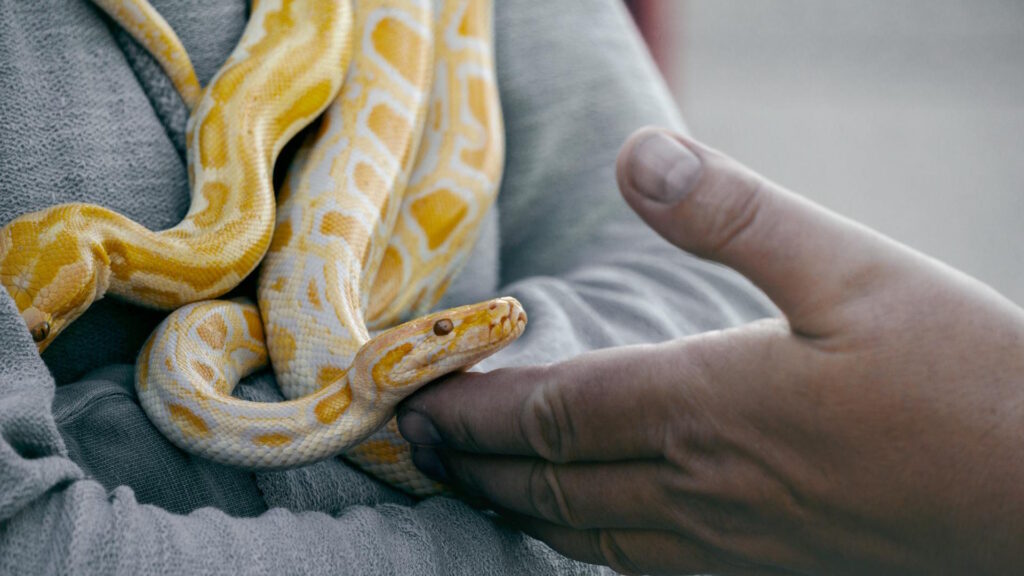
Understanding the nature and limitations of snake recognition has practical implications for snake keeping. Consistent handling by the same person, especially when the snake is young, may help it become more comfortable with that individual through familiarity with their scent, handling style, and voice vibrations. Owners should maintain regular but not excessive handling schedules, typically a few short sessions per week. When introducing a snake to new handlers, doing so gradually and allowing the snake to become accustomed to the new person’s scent before handling can reduce stress. Some owners find that wearing the same scent-free lotion or not changing soaps frequently helps maintain a consistent chemical signature that their snake can become familiar with. It’s also beneficial to handle snakes outside of feeding times to prevent confusion, and to develop handling routines that the snake can come to expect and feel secure with. These practices acknowledge the snake’s cognitive capabilities while working within their natural limitations.
Conclusion: A Different Kind of Recognition
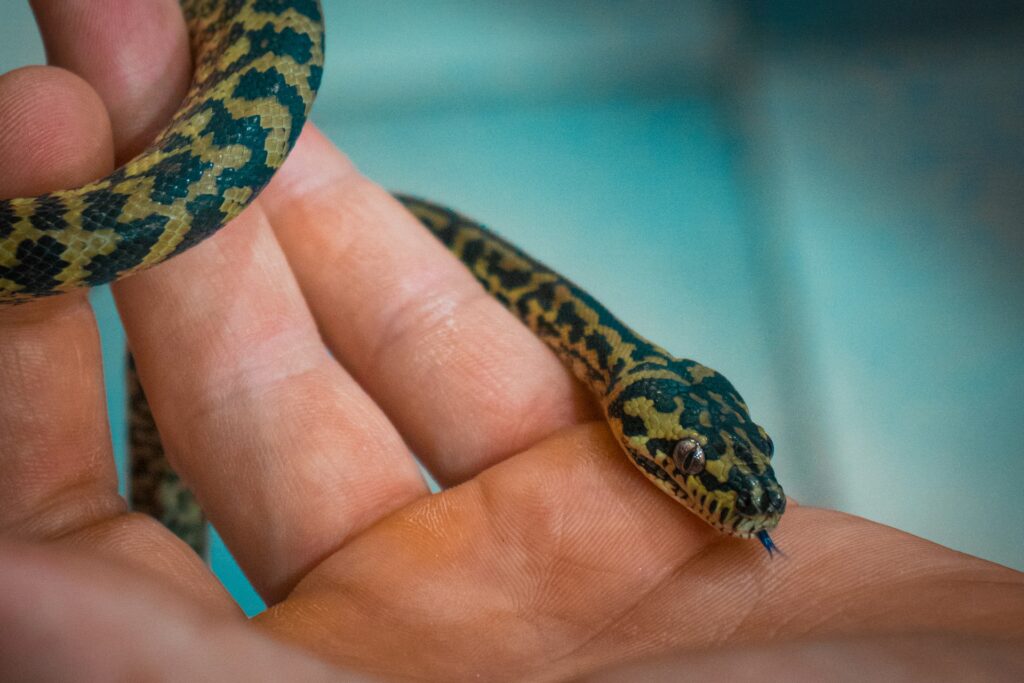
Do non-venomous snakes recognize their owners? The answer appears to be yes, but in a way that differs significantly from mammalian recognition. Snakes likely recognize owners primarily through chemical cues, potentially combined with visual, thermal, and behavioral patterns they’ve come to associate with positive or neutral experiences. This recognition doesn’t necessarily translate to emotional attachment but does create a form of familiarity that can lead to more relaxed interactions. Different snake species show varying capacities for recognition, with those kept more frequently as pets often demonstrating clearer signs of distinguishing between familiar and unfamiliar handlers. For snake owners, this understanding offers a realistic foundation for building relationships with these ancient reptiles—acknowledging their cognitive capabilities while respecting their fundamental nature as solitary hunters rather than social companions. The snake-human bond may not mirror the dog-human relationship, but it represents its own unique and fascinating form of cross-species interaction worthy of appreciation on its own terms.

